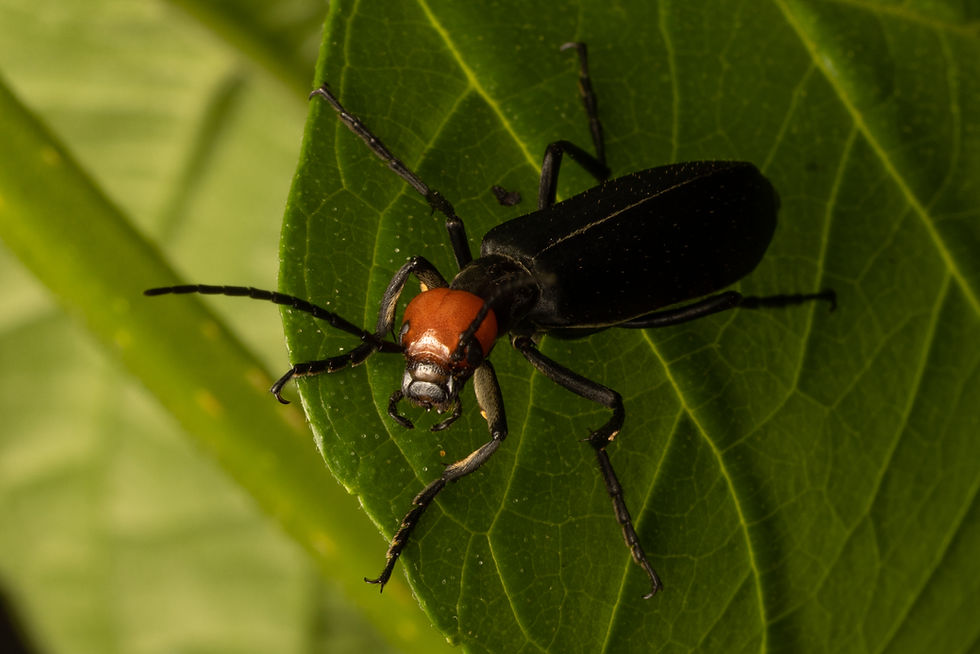BLISTER BEETLE AKA BURNING BLISTER BEETLE AKA OIL BEETLES (Epicauta mannerheimi)
- Wildcreatures
- Jul 7, 2023
- 2 min read
FROM THE BOOK OF BUGS:
BLISTER BEETLE AKA BURNING BLISTER BEETLE AKA OIL BEETLES (Epicauta mannerheimi) Plant and flower eaters as adults, it is quite a sight to see hundreds of these beetles strip a plant, like a hibiscus, of all its leaves in a day, much like locusts. You need to be careful of them, as they are able to hurt you similar to a sting as they secrete cantharidin through their legs when threatened. There is another species, the large yellow-banded blister beetle (Hycleus phaleratus), but these are less common. SEE THEM Oil beetles are conspicuous, both in body and in numbers. The whole body is black, except for the head which is bright red or orange. Find them in large groups, often on footpaths, stripping plants of their leaves in May every year.

FASCINATING FACTS: THE HONG KONG BOOK OF BUGS Our local species from the genus Epicauta lay a huge amount of eggs in the ground and the larvae look for grasshopper eggs to parasitise once they hatch. In other countries, blister beetles have an even more extraordinary life cycle, as they are nest parasites of solitary mining bees. Female oil beetles dig nest burrows in the ground, in which they lay hundreds of eggs. Once hatched, the active, louse-like larvae climb up onto flowers and lay in wait for a suitable bee. Their hooked feet enable a firm hold on an unwitting bee collecting pollen for its own nest. Once in the bee’s nest, the larva disembarks and eats the bee’s eggs and the store of pollen and nectar. The larva then develops in the bee burrow until it emerges as an oil beetle ready to mate and start the whole cycle again.










Comments